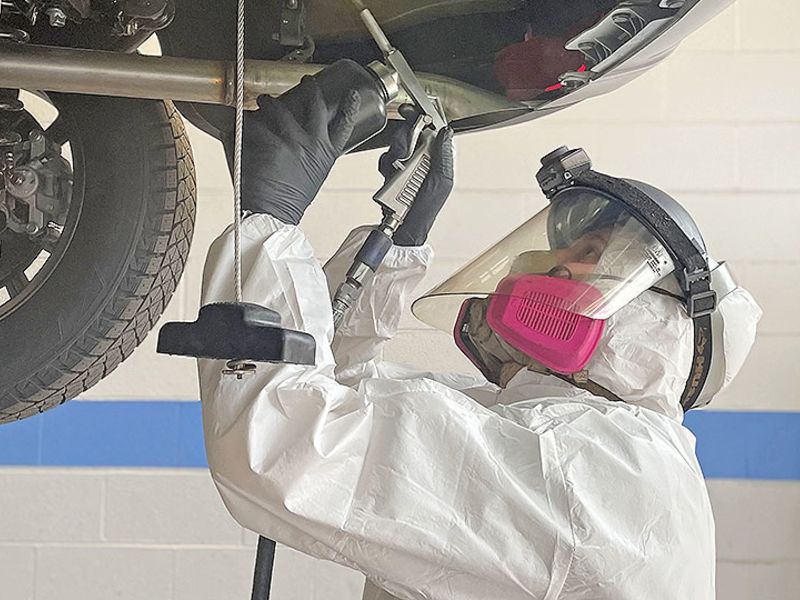
Beset by margin compression on vehicle sales last fall, Roy Lacey, dealer manager of Rapids Honda, started looking for ways to cut expenses. One possibility was as clear as an untinted window: The dealership in Coon Rapids, Minn., was paying vendors more than $500,000 a year to install aftermarket products.
“To take back some profits, we had to take a look at things we were outsourcing,” Lacey said. “We were paying other companies $50,000 to $60,000 a month to install accessories. I thought to myself, ‘This is crazy.’ ”
After conferring with Lance Spah, the store’s service manager, Lacey decided the dealership — about 15 miles northwest of downtown Minneapolis — would bring in-house all window-tinting and protective-film installations as well as rustproofing and undercoating applications.
After in-house installations went fully operational in March, significant financial gains followed.
In March 2020, gross profit for internal service department work — essentially vehicle reconditioning and detailing — was $103,200. A year later, it more than doubled to about $224,000, with accessory installations accounting for most of the gain, Lacey said. And gross profit for the eight months from March through October rose to around $1.5 million, a 67 percent jump compared with the same period last year. Installations again generated most of the increase.
“Before, we were the middleman that facilitated the accessory installations,” Lacey told Automotive News. “Now, we facilitate and provide the services, and we get the whole pie, not just a piece of it.”
The dealership — which sells about 1,250 new and 1,250 used cars annually — also benefits by paying wholesale prices for materials, such as window tinting, undercoating and rustproofing products.
“We pay so much less buying wholesale,” Lacey said. “So we’re now keeping whatever profits the vendors were making.”
And revenue is boosted by a process that has the sales team, led by General Sales Manager Katie Young, offering 100 percent of the products the dealership sells to 100 percent of the customers 100 percent of the time, he noted.
It took five months to lay the groundwork for the switch. That included hiring and training five new employees who primarily do installations.
Aside from additional labor expense, startup costs were minimal. Spah converted underused space in detailing stalls into accessory installation bays at virtually no cost. Product manufacturers provided employee training for free, and undercoating and rustproofing manufacturers gave the dealership installation equipment for free in exchange for buying their products.
The change yielded other benefits that can’t be measured or quantified but nonetheless are significant. For example, in-house installation has helped quality control.
“If your own employees do the work, the level of accountability is higher,” Lacey said.
The process is faster — typically one day for an installation vs. three with outside vendors.
And service department morale has improved because the process gives entry-level employees opportunities to develop specialized skills and increase pay, he said.
The takeaway for other stores? Dealers should be open-minded about ways to cut costs and improve profitability, Lacey said. Doing things the same way because that’s the way they’ve always been done is a risky mindset in a fast-evolving industry.
“Every dealer should look at how much they spend on outside vendors,” he said. “If they retain those dollars, it all goes straight to the bottom line. You need to stop writing all those checks and create value for your customers.”
Lacey urged dealers to be forward-thinking.
“The way I look at it, you can either be Netflix or Blockbuster,” he said. “We chose to be Netflix.”

